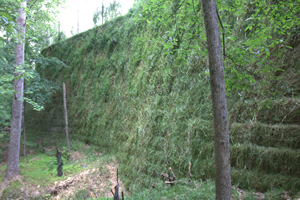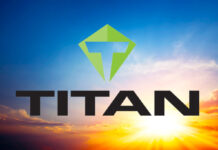 The importance of green engineering continues to grow. Recent data has helped prop up two long-held beliefs: (a) that many building professionals believe green engineering and construction costs more [up to 10%] and (b) actual up-front cost increases are closer to 1 – 2%, if not level on cost or more economical. Long-term cost savings, such as on energy costs with greenroofs, and performance more than recoup any potential up-front costs.
The importance of green engineering continues to grow. Recent data has helped prop up two long-held beliefs: (a) that many building professionals believe green engineering and construction costs more [up to 10%] and (b) actual up-front cost increases are closer to 1 – 2%, if not level on cost or more economical. Long-term cost savings, such as on energy costs with greenroofs, and performance more than recoup any potential up-front costs.
The utilization of geosynthetics in civil engineering and construction has long been known for saving on a number of projects, such as in the significant reduction in the need special aggregate for road subgrade. Reducing the demand for aggregate provides savings on transportation costs to a site and on site labor. It also saves on CO2 emissions from both truck traffic and aggregate harvesting and processing operations.
A great many geosynthetics allow for the use of local fill, due to product durability, filtration properties, flexibility, and other key characteristics. A number of environmental project credit systems cite the use of local materials for project credits.
The green roofs sector has benefited tremendously from geosynthetic containment and drainage technologies.
 Today, numerous geosynthetic providers are providing a number of resources for engineers, contractors, facility owners and other to help them understand how well-established and new-to-market geosynthetics meet the goals of green engineering principles of US Green Building Council’s (USGBC) Leadership in Energy and Environmental Design (LEED) program, the system that has become the chief measure in many countries now for earning additional environmental project credits.
Today, numerous geosynthetic providers are providing a number of resources for engineers, contractors, facility owners and other to help them understand how well-established and new-to-market geosynthetics meet the goals of green engineering principles of US Green Building Council’s (USGBC) Leadership in Energy and Environmental Design (LEED) program, the system that has become the chief measure in many countries now for earning additional environmental project credits.
Some geosynthetic companies promoting these practices:
- TenCate Geosynthetics LEED fact sheets on its website that focus on product construction rather than the many other benefits the products produce on site. (You can find those benefits outlined in TenCate’s case studies and product sheets.) For example, Mirafi® MiraGreen™ D for site drainage applications is an attractive choice here. It’s a nonwoven drainage geotextile comprised of 30% (LEED calculated) recycled content, thus greatly reducing the dependence on virgin petroleum based resins without sacrificing material strength and performance.
- Tensar International has provided numerous case studies and articles (in its GeoTalk publication) on how geogrid reinforcement technologies deliver LEED value. The company’s Sierra® Slope Retention System and SierraScape® Retaining Wall System and Mesa® Retaining Wall Systems can help qualify for LEED credits in select sustainable sites (SS), water efficiency (WE) and materials reuse (MR) classifications.
- NAUE Geosynthetics released its new Secugrid® series of publications in fall 2009: the Four Dimensions of Secugrid®. The series focuses on the four dimensions of length, width, depth and time that greatly influence civil engineering: project scope, design, product selection, expected service life. One of the chief publications in the series addresses the ecological and environmental aspects of these reinforcement products—how they utilized local fill while reducing transportation costs and minimizing site disturbance needs.
- Soprema offers a number of LEED guidance suggestions on its website regarding the use of geomembranes. Based in Canada, Soprema notes how Canada’s Green Building Code offers potential LEED points under Sustainable Site Development, Water Efficiency, Energy and Atmosphere, and in other categories for which geomembranes provide solutions.
These are just some of the many geosynthetic companies helping engineers, contractors, architects and other building professionals achieve these now sought-after project credits while simultaneously utilizing well-established, economical, long-term materials.
More geosynthetics companies and technologies influencing this segment of the field will be profiled here soon.
Chris Kelsey is the editorial director for Geosynthetica. He can be reached at chris@geosynthetica.net.











